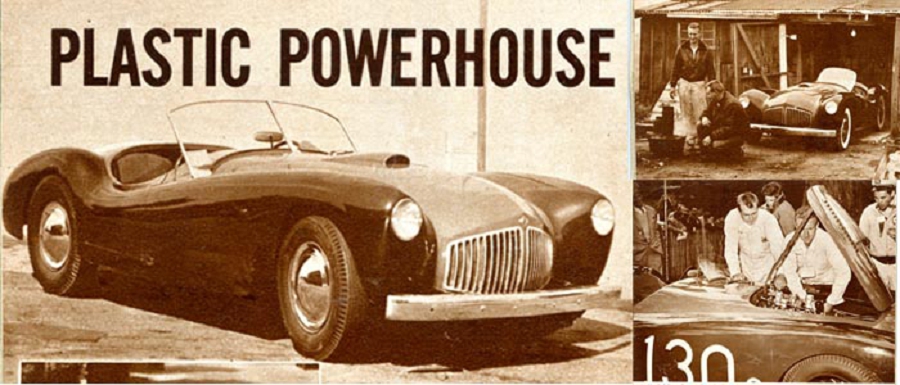

Enthusiast Mike Wittman snapped this picture of the Glasspar Racecar at Pebble Beach Back in 1953 when he was just 16 years old. He’s kept this picture all these years, and was kind enough to share this with us. Mike camped out overnight to see the race – right at Pebble Beach. The picture was taken on Saturday – before the carbs caught on fire.
Note:
This is the first in a series of articles on the Glasspar Racecar, built by Bill Tritt of Glasspar, Ted Mangels and Ed Martindale of Mameco, and Clem TeBow and Don Clark of CT Automotive. This car was first raced by Warren Gerdes, and later by the legendary Bill Pollack. For additional articles in this series on Bill Tritt and the Glasspar Mameco-Ardun Racecar, click on the link below.
Click Here To Review Articles Published on the Glasspar Mameco Ardun Racecar
—————————-
Hi Gang…
When I first picked up the automotive magazine called Honk (September, 1953), here’s what I read:
“With all this power on tap and coupled with the light (1900 lbs) weight of the car, tremendous acceleration characteristics are to be expected. The expectation was proved at a recent race at Golden Gate Park when Warren Gerdes, who drove the car in its first two times out, laid a strip of rubber some 200 feet long in each of the lower gears and a comparatively short strip of about half that length in high when pulling out of the pits. At Pebble Beach, a month earlier, there wasn’t a car on the course that could match it for sheer torque”
What a great introduction from Honk Magazine to an impressive car built and raced during the Golden Age of racing – in 1953. That’s one of many quotes which show how excited people were to see the Glasspar racecar entry, and the potential it had among a field of drivers with Ferraris, Cunninghams, Allards, and other legendary race cars.
The Golden Age of Sports Car Racing
Back in 1953 we were entering the “golden age” of fiberglass sports cars in America (picture gold colored/cured fiberglass resin….) It was just two years earlier when Bill Tritt, Eric Irwin, and John Wills introduced the world to fiberglass sports cars at the November 1951 Petersen Motorama. Now, the public could build, drive, and enjoy American sports cars – made out of the new wonder material, fiberglass. But now, it was time to do more to promote this new wonder material. It was time to go racing… That’s what Bill Tritt implicitly understood in 1952.

Here’s a Picture of the Top Secret Martindale Family Barn in Canoga Park, California Where the Glasspar Racecar was Secretly (Peacefully?) Assembled. Shown Are Mangels and Martindale Warming up over their Oil Heater.
Glasspar Racing Team
Back then, racing was still an amateur sport. That is, there was no sponsorship. No STP decals. No Valvoline shown on the fenders. If the driver was lucky, the owner of the car (if the owner and driver were different people) might pay for the hotel room and a meal or two as a way to say “thanks” for driving the car in the race. And fire suits were still a great idea. So what’s a budding company to do to get some free promotion? Tritt went to work with some ideas.
Building the Glasspar Racecar
Tritt started formulating his plans in late 1952. In fact, he probably knew about the Glasspar racecar being built by Dick Morgensen of Phoenix (more about that in a future story) which debuted at Torrey Pines in December of 1952. Morgensen did quite well back then getting a second place in the novice contest. But Tritt wanted to do better.

Great Picture from the Tritt Family Archives Showing the G2 Racecar Chassis and Mercury-Ardun Engine
Glasspar had started building cars with modified 1939-1948 Ford chassis in early and mid 1952, and moved to the “Post” chassis built by Shorty Post of Orange California in late 1952 (click here for more about the first Glasspar G2 “Shorty” Post Chassis). But…in talking with Bill Tritt back in 2008, he had mentioned that although the Post chassis was good, it offered too much flex, and he wanted to make some changes. The timing couldn’t have been better for Ted Mangels and Ed Martindale of Newport Beach, California – soon to form MAMECO (Mangels and Martindale Engineering Company)
The Birth of MAMECO (Ted Mangels and Ed Martindale of Newport Beach, California)
Back in 2006, I interviewed Ed Martindale extensively concerning his memories of MAMECO, and he shared the following information with me.

All MAMECO Frames Consistently Followed the Plans Set Forth by Mangels and Martindale – Shown Here From the Sept 1953 issue of Honk Magazine
“We (Mangels and Martindale) were military buddies. I was drafted on November 8th, 1950 and Ted was drafted 2 days later on November 10th. We actually met at Ft Ord (Monterey), but both of us went to Ft Monmouth and studied radio electronics for about 11 months. After school was completed we ended up at SCEL – Signal Corp Engineering Labs – and stayed there for about a year. At the end of two years of enlisted service (November 1952) we left the army and went searching for a business to start together.
Ted lived with me at my parent’s farm in Canoga Park, California. We fixed up an old barn on our property, poured cement for a floor (editor’s note: no dirt floor here gang) and built our first frame. We did have a primitive oil heater in barn, though. Oil dripped on a pan, and the fire burned warm. Good enough to start a business!”
Like many young men at the time, both Mangels and Martindale were car guys and wanted “in” on the budding sports car scene in Southern California. Late in 1952 they began talking to fiberglass car companies in the Los Angeles area – Glasspar, Victress, Woodill, Allied, and

C & T Automotive Was Selected to Build the Ardun-Mercury Engine – One of the Best Speed Shops / Engine Builders of the Day.
others. Bill Tritt’s company was the first company interested in their work. They were Mameco’s first client, and others soon followed.
“The first frame we built was at the barn in Canoga Park, and that was for the Glasspar G2 Race car. All other work and frames built were at our soon to be located (and later purchased) location in Newport Beach, California. And….about the name “MAMECO”… it stands for “Martindale and Mangels Engineering Company”, and was pronounced “Maam-eck-o”. “
Building the Engine
Not only did MAMECO build the chassis, but they assisted C&T Automotive from Sherman Oaks, California, in building the engine. They later assembled the G2 race car too. Martindale shared his memories as follows:
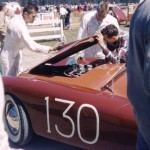
Great Color Shot of Mameco Ardun Racecar at Pebble Beach in April 1953 – The Only Known Color Photograph Uncovered So Far.
“In Sherman Oaks, California, there was CT Automotive (Clark and Tebow Automotive), and we built the motor in their shop. The engine had a ½ inch longer stroke and 3/8″ bigger bore, and came out to 304 cubic inches. We (MAMECO) created an intake manifold for 3 carbs out of steel. We did this because the Ardun manifold did not perform as well as we would have liked.”
Ready…..Set…..Go! The First Race – Warren Gerdes, Driver
The car was ready in March, 1953, and testing and modifications were finished in early April. So then, all that’s left to do is go racing. The first driver was Warren Gerdes, Production Manager for Glasspar G2 automobiles and race car driver and sports car enthusiast whose racing experience started back in the 1940s. On his first race at Pebble Beach (April, 1953), Gerdes was in first place the entire race until the last lap when a carb leak caught the engine on fire. Here’s a short review of what was said by John Cristy of the Los Angeles Examiner in his column “Wheelspin”:
“The backyard equipment is moving in on the road racing scene with a loud, fast roar. ….Another standout was the Mameco Glasspar job powered by the potent C-T Automotive Ardun Mercury track engine. The car was a joint effort by Bill Tritt of Gasspar, Ed Martindale and Ted Mangels of Mameco, who built the chassis, and Clem TeBow and Don Clark of C-T, who stuffed the engine into the rig. The running gear was built up from Ford parts, and anybody who says cross-spring suspensions don’t handle is hence-forth going to find an argument. Martindale admits that torsion bars and swing axles would have helped some, but our observation was that the car did a terrific job the way it was. A series of unfortunate accidents kept Warren Gerdes who drove the car, out of the winner’s circle, but while the car was running, it was phenomenal.

Trailering Any Racecar was a Simple Task “Back in the Day”….Any Single Axle/no Suspension Trailer Would Do (April, 1953 on way to race).
The C-T engine was taken out of a track roadster and dumped into the road machine two days before the race. Set up for alcohol fuel, the thing had to be changed over for gasoline, which was where the trouble came in. One of the carburetors loaded up on the last lap of the novice event and dumped gas onto the exhaust. The resulting fire was spectacular, but not as spectacular as the way Gerdes had led the pack from the outset. In the actual running, the car did have one fault – too much steam for the gearing. The result was the car got “squirrelly” coming off the turns, leaving a black streak of rubber on every straight. Even with this, the car was able to pick off C-type Jaguars with little or no trouble. ‘Nuff Said?”
Quite an excellent write up for the Glasspar team for their first race. Kudos to all at hand. Warren Gerdes went on to drive the car at least once more. But as his son, Dennis Gerdes, shared with me, his wife was concerned for his safety as their family began to grow, and Warren left racing in 1953. Have no fear….another excellent driver and race car enthusiast was waiting in the wings for just such a ride.
Frank Hecox Memories: Glasspar Employee 1952-1955
Frank Hecox was at the first race at Pebble Beach in April, 1953. He was an employee for Glasspar and worked on the elite team that built the G2 bodies from late 1952 thru 1954. Frank was at the race and participated with getting the car ready after the last lap fire. Rather than re-tell his memories within this story, Frank was kind enough to let me record his thoughts and we can share them with you now in audio form. Click on the small black triangle below, to begin the audio interview. It’s about 7 minutes long.
Thanks to Frank Hecox for sharing his memories of the car and some of its unique features. Listening to him is a window back in time to the first race at Pebble Beach with Warren Gerdes at the helm. Thanks for the memories Frank!

Glasspar Mameco Ardun Racecar on Fire at Pebble Beach, April 1953. Warren Gerdes (Driver) Shown Safely Exiting From Car (Tritt Collection)
End of Part 1 of the Story
I hope you’ve enjoyed today’s story. In the next installment, we’ll discuss racing memories of Bill Pollack who took over driving in early Fall of 1953, and drove the Glasspar racecar to impressive results against some of the most prominent drivers and cars of the day.
Thanks again to Bill Tritt, Dennis Gerdes, Mike Wittman, Ed Martindale (interview from 2007), Marty Martindale, and Frank Hecox for taking the time to share with us their stories and memories of the Glasspar G2 race car.
Until next time gang….Glass on….
Geoff
——————————————————————–
Click on the Images Below to View Larger Pictures
——————————————————————-
- Here’s a Picture of the Top Secret Martindale Family Barn in Canoga Park, California Where the Glasspar Racecar was Secretly (Peacefully?) Assembled. Shown Are Mangles and Martindale Warming up over their Oil Heater.
- All MAMECO Frames Consistently Followed the Plans Set Forth by Mangles and Martindale – Shown Here From the Sept 1953 issue of Honk Magazine
- Great Picture from the Tritt Family Archives Showing the G2 Racecar Chassis and Mercury-Ardun Engine
- C & T Automotive Was Selected to Build the Ardun-Mercury Engine – One of the Best Speed Shops / Engine Builders of the Day.
- Enthusiast Mike Wittman snapped this picture of the Glasspar Racecar at Pebble Beach Back in 1953 when he was just 16 years old. He’s kept this picture all these years, and was kind enough to share this with our readers today. He camped out overnight to see the race – right at Pebble Beach. The picture was taken on Saturday – before the carbs caught on fire.
- Great Color Shot of Mameco Ardun Racecar at Pebble Beach in April 1953 – The Only Known Color Photograph Uncovered So Far.
- Trailering Any Racecar was a Simple Task “Back in the Day”….Any Single Axle/no Suspension Trailer Would Do (April, 1953 on way to race).
- Glasspar Mameco Ardun Racecar on Fire at Pebble Beach, April 1953. Warren Gerdes (Driver) Shown Safely Exiting From Car (Tritt Collection)







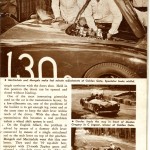











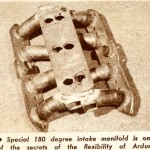






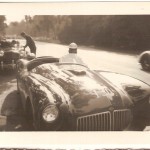
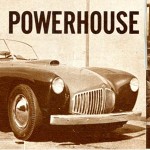
This site is protected by reCAPTCHA and the Google Privacy Policy and Terms of Service apply.